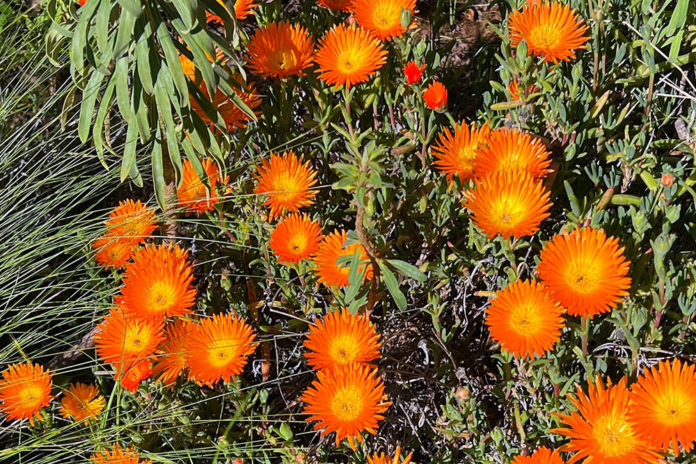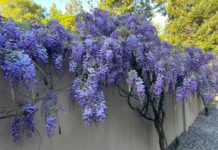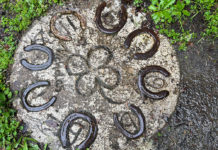
By Pierre Ratte
Spring officially sprung last Thursday on March 20, the spring equinox. Right on time, the weather cooperated. Monday and Tuesday temps pushed into the 80s. Gosh that was welcome! And now, spring showers for the rest of the week.
Warmth and water are most always welcome in California. These happy spring flowers, coppery mesemb, Malephora crocea, cheer up spring gardens with wild pops of color, like so many little suns. They are succulents in the ice plant family. Native to Africa, this plant is considered a noxious weed in some areas and a perfect garden addition in others. Wildfire resistant and drought tolerant, its perennial bloom is a harbinger of spring throughout Sonoma and much of California.
Fun facts: Spring isn’t a fixed cosmic event. Day doesn’t precisely equal night on the equinox. Wait. What? Why? Wobble. The Earth wobbles. It’s officially called the axial precession. Imagine the Earth’s axis as a gyroscope’s center pole wobbling. Earth has four movements: 1) spin (days), 2) orbit around the sun (years), 3) wobble, axial precession (26,000 years), and 4) walk, apsidal precession (112,000 years). Why wobble? If round, Earth might not wobble, but its plasticity (ocean) allows gravity from the sun and moon to pull the equator outward, resulting in the equatorial bulge—think, beach ball with a weight on top.
Axial tilt and precession increase hemispheric radiation (global warming and cooling) on a 10,000-year cycle that increases variability of temperatures in the north while decreasing variability in the south. In 10 years, the North Pole will point closest to the Sun (perihelion) maximizing solar radiation in the Northern hemisphere in June. Apsidal precession, Earth’s fourth movement, refers to a slight shift in Earth’s elliptical orbit—the walk that goes with the wobble.
Spring rains bring petrichor, the earthy, after-rain smell. It comes from geosmin, a volatile organic, bicyclic terpene produced by microbes, including cyanobacteria and actinobacteria to which humans are insanely sensitive, able to detect a few parts per trillion.
“Here Comes the Sun” by the Beatles on the Abbey Road album was written and sung by George Harrison, inspired while sitting in Eric Clapton’s garden, reportedly avoiding an Apple Inc. business meeting. Ringo recorded the rhythm track on July 7, his 29th birthday. Mixing for the song marked the last time the Beatles “worked” together—Aug. 20, 1969. Abbey Road was the Beatles last recorded album; Let It Be was their last released album.










